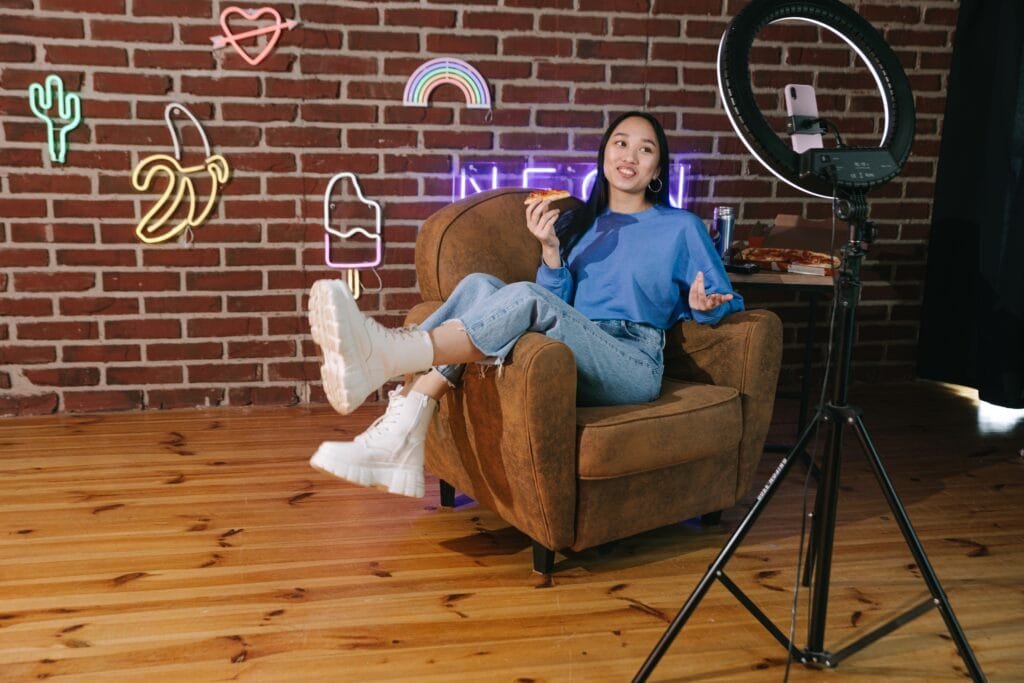In the ever-evolving realm of digital marketing, influencer marketing has emerged as a key player, especially in the home and living sector. This industry, thriving on aesthetics, functionality, and personal style, finds a natural ally in lifestyle influencers – individuals who can sway the choices of thousands, if not millions, with a single post or story. The synergy between home and living brands and these digital creators is not just about showcasing products but about building stories and experiences that resonate with audiences. This article aims to unpack the multifaceted relationship between the home and living sector and influencers. We’ll explore effective strategies, the impact of authentic storytelling, the significance of aligning with the right influencers, and how emerging trends and technologies are shaping this dynamic landscape.
Understanding the Home and Living Sector’s Audience
Identifying the Target Audience
The first step in any influencer marketing strategy is understanding the audience. For home and living, the audience can range from new homeowners excited about decorating their space to interior design enthusiasts seeking inspiration. Understanding demographics like age, income, lifestyle, and even geographical locations can help tailor content that strikes a chord.
Tailoring Content to Audience Preferences
Once the audience is identified, it becomes easier to tailor content. For instance, content for first-time homeowners might focus on budget-friendly decorating tips, whereas content for luxury home owners might showcase high-end brands and exclusive designs. Knowing what appeals to each segment of the audience is crucial for creating impactful influencer marketing campaigns.
Selecting the Right Influencers
Matching Influencers with Brand Values
Not every influencer is the right fit for a brand. The key lies in finding influencers whose aesthetics, values, and audience align with those of the brand. A high-end furniture brand might collaborate with an influencer known for their luxurious and sophisticated taste, while a brand focusing on sustainability might look for someone whose lifestyle embodies eco-friendliness.
Understanding the Influence of Micro-Influencers
Micro-influencers, despite having a smaller following, often boast higher engagement rates. Their recommendations can come across as more genuine and relatable. For home and living brands, partnering with micro-influencers can be a strategic way to reach niche audiences.
Crafting Authentic and Engaging Content
The Role of Storytelling in Home and Living
Storytelling can transform a simple product showcase into an aspirational narrative. Influencers sharing stories of how a particular home decor piece complements their lifestyle can inspire audiences to envision those products in their own lives.
Using Visuals to Enhance Appeal
In the home and living sector, visuals are everything. High-quality images and videos showcasing the beauty and functionality of products in real-life settings can significantly boost the appeal. Influencers skilled in creating visually appealing content can thus be invaluable.
Utilizing Social Media Platforms Effectively
Platform-Specific Strategies
Each social media platform offers different advantages. Instagram, with its visual-centric format, is perfect for showcasing home decor, whereas YouTube can be ideal for detailed home improvement tutorials. Understanding and leveraging the strengths of each platform can amplify the reach and effectiveness of influencer campaigns.
Engagement Through Interactive Content
Interactive content like polls, quizzes, and Q&A sessions can boost engagement. For home and living brands, this might include seeking audience opinions on design choices or creating interactive home tours. Such strategies not only engage but also involve the audience in the narrative.
Measuring Campaign Success
Setting Clear Goals and KPIs
For any influencer marketing campaign, it’s vital to establish clear goals and Key Performance Indicators (KPIs). Whether the aim is to increase brand awareness, drive traffic to a website, or boost sales, having specific, measurable goals allows for accurate assessment of the campaign’s success.
Analyzing Engagement and Reach
Metrics such as likes, comments, shares, and the overall reach of the posts give valuable insights into how the audience is interacting with the content. For the home and living sector, not just the quantity, but the quality of engagement matters – comments that show genuine interest or queries about products can be more valuable than just likes.
Leveraging Emerging Trends
Virtual and Augmented Reality Experiences
Emerging technologies like VR and AR offer exciting new ways to engage audiences. For example, using AR to virtually place furniture in a room can help consumers make better purchasing decisions and feel more connected to the brand.
Sustainability and Eco-Friendly Living
With a growing consciousness around sustainability, influencers advocating for eco-friendly products and sustainable living can resonate well with audiences. Brands that align themselves with this value and communicate it effectively through influencers can tap into a market segment that prioritizes environmental responsibility.
Collaborating for Long-Term Partnerships
Building Relationships with Influencers
Rather than one-off campaigns, long-term collaborations allow for deeper storytelling and brand loyalty. When influencers become regular users and advocates of a brand, their endorsements are more authentic and impactful.
Benefits of Long-Term Collaborations
Consistent collaborations with the same influencers can lead to better brand recall and a stronger brand-influencer-audience relationship. It allows for a series of interconnected stories and experiences, providing a richer narrative to the audience.
Overcoming Challenges in Influencer Marketing
Dealing with Market Saturation
In a market flooded with influencer endorsements, standing out requires creativity and authenticity. Campaigns that are unique and personal to the influencer’s style and story can cut through the noise more effectively.
Ensuring Authenticity and Transparency
As influencer marketing becomes more prevalent, audiences are becoming more discerning. Influencers who genuinely use and love the products they promote tend to be more trustworthy. Brands need to ensure that their influencer partnerships and the resulting content are authentic and transparent.
Adapting to Changing Consumer Behaviors
Understanding Evolving Market Trends
The home and living sector must keep pace with rapidly changing consumer behaviors and preferences. Influencers, as trendsetters, play a crucial role in identifying and showcasing these evolving trends. Whether it’s minimalist designs, smart homes, or DIY home projects, influencers can provide real-time insights into what’s trending and how brands can adapt.
Tapping into Micro-Moments
Micro-moments, instances when consumers turn to a device to act on a need to learn, do, discover, watch, or buy something, are crucial. Influencers can effectively tap into these moments by providing content that meets these immediate needs, such as a quick home organization tip or a review of a new home appliance.
Integrating Influencer Content Across Channels
Cross-Platform Promotion
Utilizing multiple platforms can extend the reach and impact of influencer campaigns. A YouTube video tour of a beautifully designed room can be complemented with Instagram stories showing detailed snippets, and Pinterest pins for ‘shop the look’ inspiration.
Consistency in Messaging Across Channels
While leveraging various platforms, it’s important to maintain consistency in messaging. The core message should resonate across different channels, though the presentation might differ to suit each platform’s audience.
Utilizing User-Generated Content
Encouraging Audiences to Share Experiences
User-generated content (UGC) can be a goldmine for brands in the home and living sector. Influencers can encourage their followers to share their own experiences or how they’ve incorporated a brand’s product into their homes, creating a ripple effect of organic brand promotion.
Building a Community Around Shared Experiences
This UGC not only adds authenticity to the brand’s messaging but also helps in building a community. Brands can feature these stories on their social media or in ad campaigns, fostering a sense of belonging and connection among consumers.
Future of Influencer Marketing in Home and Living
Predicting Upcoming Trends
The influence of technology in creating immersive shopping experiences, such as using AI for personalized product recommendations or VR for virtual home makeovers, is likely to grow. Influencers who can adeptly use these technologies to showcase products will become invaluable partners.
Staying Ahead of the Curve
For brands in the home and living sector, staying ahead of the curve will mean not just adopting the latest technologies but also foreseeing and setting trends. Collaborating with visionary influencers who understand and can predict consumer needs will be key.

Related: Check out our free SEO suite

Leveraging Influencer Expertise in Home Decor and Improvement
Partnering with Expert Influencers for Credible Advice
In the realm of home and living, expertise is highly valued. Brands can partner with influencers who are interior designers, architects, or home improvement experts to provide credible, professional advice. This not only enhances the brand’s reputation but also provides customers with genuinely useful information.
DIY and Home Renovation Projects
DIY projects and home renovation tips are incredibly popular. Influencers specializing in these areas can offer step-by-step guides, budgeting tips, and innovative ideas, making such collaborations highly engaging and shareable.
Creating Impactful Visual Stories
Emphasizing Aesthetic and Quality Through Imagery
The visual element is key in the home and living sector. High-quality, aesthetically pleasing images and videos are crucial. Influencers with a knack for photography and a good eye for design can create compelling content that showcases products in real-life settings, enhancing their appeal.
Utilizing Video Content for Deeper Engagement
Platforms like YouTube or Instagram Reels offer great avenues for detailed video content. From home tours to product reviews, video content allows influencers to engage with their audience more deeply, providing a better understanding of the product’s use and aesthetics.
Strategic Use of Influencer Marketing for Seasonal Promotions
Capitalizing on Seasonal Decor Trends
Seasonal changes offer excellent opportunities for promoting specific home and living products. Influencers can create content around how to refresh a space for summer or cozy up for winter, incorporating brand products seamlessly into these narratives.
Holiday and Festive Collaborations
Holidays and festive seasons see a surge in home decoration and renovation. Influencers can craft holiday-themed content, from decoration ideas to festive DIY projects, integrating brand products organically into their festive storylines.
Utilizing Feedback and Engagement Metrics to Refine Strategies
Learning from Audience Feedback
The comments and feedback on influencer content can provide brands with valuable insights into consumer preferences and areas for improvement. Actively monitoring and analyzing this feedback is crucial for refining future strategies.
Monitoring Engagement and Conversion Metrics
Engagement rates, click-throughs, and conversion metrics help in measuring the ROI of influencer collaborations. Brands should consistently track these metrics to understand the effectiveness of their influencer partnerships and adjust strategies accordingly.
Closing Remarks
In the dynamic world of home and living, influencer marketing stands as a beacon for creativity, authenticity, and personal touch. Brands that skillfully navigate this space, embracing its nuances and potential, can build not just sales, but stories and spaces that resonate deeply with consumers. As the market evolves, staying attuned to these shifts and strategically leveraging influencer partnerships will be key to sustaining relevance and achieving lasting success in the home and living sector. Influencer marketing, with its unique blend of authenticity, creativity, and personal connection, offers immense potential for the home and living sector. Brands that can effectively harness this power will find themselves not just selling products, but inspiring lifestyles and dreams, thus creating a lasting impact in the minds and homes of their consumers.
READ NEXT:
- 19+ Top Customer Relationship Management (CRM) Software: What’s Best?
- The Role of Interactive Content in Enhancing Influencer Marketing Campaigns
- The Art of Crafting High-Converting Affiliate Landing Pages
- The Role of Webinars and Live Events in Affiliate Marketing Success
- [Report] The State of Content Marketing in 2023: Insights and Analysis





















